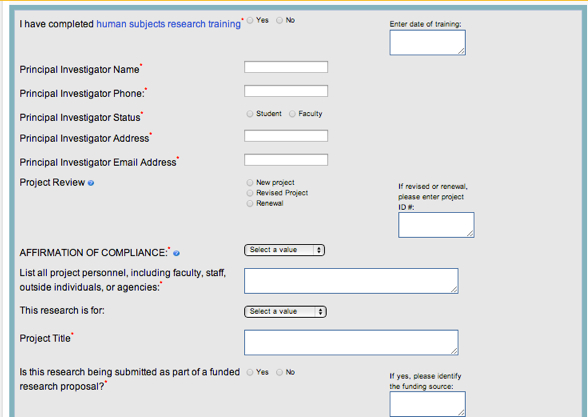There are few information gathering processes in academia as important as those of the Institutional Review Board (IRB). Federally-mandated in the U.S. (other nations have their own systems), IRBs are designed to protect the rights and welfare of human subjects who take part in research.
But the IRB process, while recognized as vital, can seem onerous to busy faculty and other researchers and even to members of the boards that sit in review.
At Asbury Theological Seminary (ATS) in Kentucky, LibAnalytics is helping streamline the IRB process for researchers, board members, and administrative staff alike.
We interviewed Greg Sigountos, Instructional Resource and Production Specialist at ATS, about their use of LibAnalytics for institutional review data collection and management. Here are some excerpts from our conversation.

Q: Is the Institutional Review Board administered by the library or are you doing this for a different unit in the institution?
The IRB isn’t technically administered by the library, but the Director of the Library is the chairperson, and our Administrative Assistant is the board’s recording secretary. Our IT and web services areas are busy with other major projects, so the question came up: could we take care of this in-house, and use LibAnalytics? LibAnalytics let us have control over all the steps in the review process, rather than have to work on other departments’ schedules.
Q. Tell us about the old IRB info gathering process. What made you look for another way to do it?
The old way involved researchers downloading a fillable PDF, writing their answers down, and e-mailing the PDF. This was software-dependent: it required Adobe Reader, and sometimes in the past, the form stopped saving data for users. The form, once created, wasn’t editable by a user either. If a user wanted to resubmit or edit their request, they could copy and paste their previous answers, but then the OCR would produce bizarre errors, leading to emails back and forth asking for clarifications.
Q. How long have you been using LibAnalytics for the Institutional Review Board data?
LibAnalytics is new for us. In fact, having a data warehouse for the IRB records is new for us. We’re in an assessment crunch right now, though, and being able to store this data helps a lot. Using LibAnalytics for this has saved our department a lot of time and hassle.
Q. How do researchers access the LibAnalytics form?
Researchers access the form through our portal, on the same page as the old review link. I’m going to put together a LibGuide on institutional review as well, and will embed the widget there. All the questions are in a single column by request, as once a user submits the form it’s printed as a PDF by the Administrative Assistant and circulated to the board, before an ID, decision, and reviewers are added for our records.

There’s some jQuery in there to make certain questions appear based on the review type selected by the user, to keep it as uncluttered as possible for the end-user, as well as to break up a long checklist in the middle. The tooltips are made visible because of the length and importance of some of the descriptions, and because there’s a clickable link in one of them. The form also has a section where the user can select which additional forms they’ll need to attach, and the thank you message displays a list of those forms as a reminder
Q. How are you getting the records out of LibAnalytics and into PDF format for printing?
Printing is done from the view/analyze data section. I created a few print-specific stylesheet rules, and call a plugin so that multi-line text boxes expand vertically to match the amount of text. The fillable PDF would take 8-10 pages, depending on the length of some responses, but I’ve managed to knock that down to 3-4, which is a boon for readability. The board’s comments and recommendations can then be added into a few fields that are hidden on the widget, giving us a complete record.
Q. How has the new process been received by researchers?
Initial reports are good. There are still some pieces of the review process that can’t be put into the form, but I added some code to remind users which attachments they need to submit as supplements. We had our first resubmission happen recently, and it went through smoothly for the researcher- plus, we now have records of his first submission in case we need to track history.
Q. In addition to using LibAnalytics to streamline the process, are you analyzing the data and using it to help manage or guide institutional review at the school?
We are currently in an accreditation review period, so we’re analyzing every piece of data we currently have at the institution, and trying to put in place processes that will gather data we don’t have but are going to need. Right now, I don’t know what elements of the review process we’re going to actually analyze, but until then, it’s good to cast a wide net so that we have data to analyze down the road.
Greg Sigountos is the Instructional Resource and Production Specialist at Asbury Theological Seminary. He handles faculty support, some library infrastructure, and the design of the library’s websites. The B.L. Fisher Library at ATS uses LibGuides, LibAnswers, and LibCal, in addition to LibAnalytics, to serve its user community.


